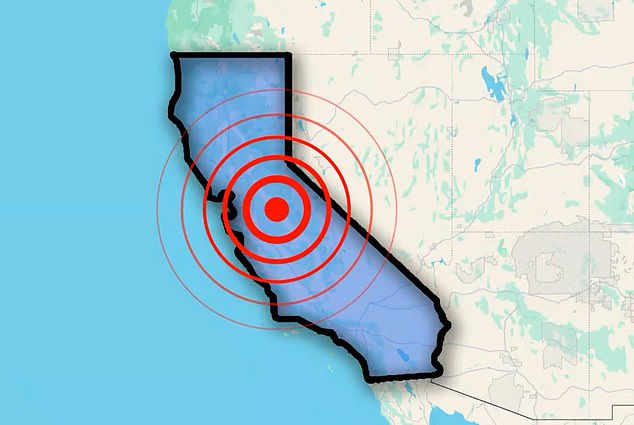California has experienced four earthquakes in less than 12 hours.
The seismic activity began around 9pm ET when a 3.5 magnitude hit outside of Little Lake.
The US Geological Survey (USGS) detected the most recent quake, a 2.8 magnitude, around 4:30am near Petrolia in the northern region of the state.
An assessment from Michigan Tech University showed that people typically do not feel quakes with a magnitude of 2.5 or less.
Those from 2.5 to 5.4 are often felt but only cause minor damage.
No injuries or damages have been reported following the California earthquakes.
The latest quake struck along the San Andreas fault that spans 800 miles up and down California, which experts fear is overdue for another massive earthquake, according to the Great California Shakeout.
Experts have estimated that over 39 million people on the West Coast would feel the effects of the ‘Big One,’ which is a magnitude 8 or higher.

California has experienced four earthquakes in less than 12 hours. The seismic activity began around 9pm ET when a 3.5 magnitude hit outside of Little Lake

An assessment from Michigan Tech University showed that people typically do not feel quakes with a magnitude of 2.5 or less. Those from 2.5 to 5.4 are often felt but only cause minor damage
The USGS also detected a 2.7 magnitude earthquake at 4:55am along San Andres, just northwest of San Diego.
The last major earthquakes on the San Andreas fault were in 1857 and 1906.
The Fort Tejon earthquake of 1857 was a 7.9 magnitude, which caused ground fissures in the Los Angeles, Santa Ana and Santa Clara Rivers.
Trees were uprooted, buildings were destroyed and two people were killed during the event.
The catastrophic 1906 San Francisco event was also a magnitude 7.9 earthquake, which killed 3,000 people and leveled much of the city.
Some research suggested more activity happens before it hits, while others have found there is no warning, she added.
California has had more than 11,000 earthquakes this year, with nine tremors above magnitude 2, Volcano Discovery reported.
The vast majority of earthquakes result from the constant movement of tectonic plates, which are massive, solid slabs of rock that make up the planetary surface and shift around on top of Earth’s mantle — the inner layer between the crust and core.
As the tectonic plates slowly move against each other, their edges can get stuck due to friction and stress will build along the edges.
When that stress overcomes the friction, the plates slip, causing a release of energy that travels in waves through the Earth’s crust and generates the shaking we feel at the surface.
This article was originally published by a www.dailymail.co.uk . Read the Original article here. .

